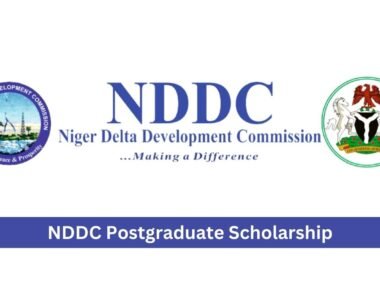Securing a scholarship can be a transformative step toward achieving your educational goals, alleviating the financial burden of tuition, books, and other expenses. A well-crafted Scholarship Letter Request is often the key to standing out among countless applicants vying for limited funding.
This formal letter, sometimes called a scholarship application letter or cover letter, serves as your opportunity to introduce yourself, highlight your qualifications, and persuade the scholarship committee that you are a deserving candidate. Whether you’re applying for merit-based, need-based, or specialized scholarships, mastering the art of writing a Scholarship Letter Request is essential.
Understanding the Scholarship Letter Request
A Scholarship Letter Request is a formal document submitted as part of a scholarship application to explain why you are a suitable candidate. It typically accompanies other materials, such as transcripts, letters of recommendation, or essays, and serves as a personal appeal to the scholarship committee. The letter should highlight your academic achievements, extracurricular involvement, financial need (if applicable), and alignment with the scholarship’s goals or values.
Scholarship committees receive hundreds, if not thousands, of applications, so your Scholarship Letter Request must be concise, professional, and persuasive. It should tell your story in a way that resonates with the reviewers, emphasizing your unique qualities and potential contributions. Below, we explore step-by-step advice, expert tips, and essential writing strategies to help you create a standout letter.
Step-by-Step Advice for Writing a Scholarship Letter Request
Crafting an effective Scholarship Letter Request requires careful planning and execution. Follow these steps to ensure your letter is polished and impactful.
Step 1: Research the Scholarship and Organization
Before writing your Scholarship Letter Request, thoroughly research the scholarship and the organization offering it. Understand the scholarship’s purpose, eligibility criteria, and values. For example:
-
Is it merit-based, need-based, or tied to a specific field like STEM or the arts?
-
Does the organization prioritize leadership, community service, or academic excellence?
-
Are there specific requirements, such as a minimum GPA or residency status?
Visit the organization’s website, review the scholarship guidelines, and note any keywords or themes emphasized in their mission. Tailoring your Scholarship Letter Request to reflect these priorities shows that you’ve done your homework and are genuinely invested in the opportunity.
Step 2: Gather Necessary Information
Compile all relevant details about yourself to include in the letter. This may include:
-
Academic achievements (GPA, honors, awards).
-
Extracurricular activities (clubs, sports, volunteer work).
-
Leadership roles or community involvement.
-
Financial need, if applicable.
-
Career goals and how they align with the scholarship’s purpose.
Having this information at hand ensures your Scholarship Letter Request is comprehensive and focused. Keep copies of your transcripts, test scores, and other supporting documents to reference when crafting your narrative.
Step 3: Structure Your Letter
A well-organized Scholarship Letter Request typically follows a standard business letter format:
-
Header: Include your contact information (name, address, phone, email) and the date, followed by the recipient’s name, title, and address.
-
Salutation: Address the letter to a specific person (e.g., “Dear Dr. Smith” or “Dear Scholarship Committee”) if possible.
-
Introduction: State the scholarship you’re applying for and briefly introduce yourself.
-
Body Paragraphs: Highlight your qualifications, achievements, and reasons for applying.
-
Conclusion: Reiterate your gratitude and interest, and provide contact information.
-
Closing: Use a professional closing (e.g., “Sincerely”) and sign your name.
Keep the letter to one page (approximately 300–500 words) unless otherwise specified.
Step 4: Write a Compelling Introduction
The opening paragraph of your Scholarship Letter Request should grab the reader’s attention and clearly state your purpose. Mention the specific scholarship by name and briefly introduce yourself, including your academic status (e.g., high school senior, college freshman) and major or field of interest. For example:
“I am writing to apply for the [Scholarship Name] offered by [Organization Name]. As a first-year engineering student at [University Name] with a passion for sustainable aviation, I am eager to contribute to the field while pursuing academic excellence.”
This sets a professional tone and establishes your connection to the scholarship’s goals.
Step 5: Highlight Your Qualifications in the Body
The body of your Scholarship Letter Request is where you make your case. Divide it into two or three paragraphs, each focusing on a specific aspect of your candidacy:
-
Academic Achievements: Discuss your GPA, relevant coursework, or academic awards. For example, “I maintained a 3.8 GPA while taking advanced placement courses in mathematics and physics.”
-
Extracurricular Involvement and Leadership: Highlight clubs, sports, volunteer work, or leadership roles. Quantify your impact when possible (e.g., “I organized a fundraiser that raised $5,000 for local charities”).
-
Financial Need (if applicable): For need-based scholarships, briefly explain your financial situation without oversharing personal details. For example, “As a first-generation college student, this scholarship would alleviate financial barriers to completing my degree.”
-
Alignment with Scholarship Goals: Connect your aspirations to the scholarship’s mission. For instance, if applying for a STEM scholarship, discuss your interest in research or innovation.
Be specific and authentic, avoiding generic statements that could apply to any applicant.
Step 6: Craft a Strong Conclusion
In the closing paragraph, express gratitude for the opportunity and reaffirm your interest in the scholarship. Summarize why you’re a strong candidate and provide contact information for follow-up. For example:
“Thank you for considering my application for the [Scholarship Name]. I am confident that my dedication to [field/goal] aligns with your mission, and I look forward to the opportunity to contribute to [organization’s goal]. Please contact me at [email/phone] with any questions.”
Step 7: Proofread and Revise
Before submitting your Scholarship Letter Request, proofread carefully for grammar, spelling, and formatting errors. Read the letter aloud to ensure it flows naturally, and ask a trusted teacher, mentor, or friend to review it. Ensure the tone is professional yet personal, avoiding overly formal or casual language.
Step 8: Submit on Time
Adhere to the scholarship’s deadline and submission instructions. Some organizations require the Scholarship Letter Request to be mailed, emailed, or uploaded to an online portal. Double-check that all required documents (e.g., transcripts, recommendation letters) are included.
Expert Tips to Highlight Your Achievements and Boost Your Scholarship Chances
A successful Scholarship Letter Request goes beyond listing accomplishments—it tells a compelling story that makes you memorable. Here are expert tips to elevate your letter and increase your chances of securing funding:
1. Tell a Personal Story
Scholarship committees value authenticity. Share a brief anecdote that illustrates your passion, resilience, or commitment to your goals. For example, if you’re applying for a medical scholarship, describe a moment when you volunteered at a clinic and realized your calling. This humanizes your Scholarship Letter Request and makes it stand out.
2. Quantify Your Achievements
Numbers add credibility to your claims. Instead of saying, “I volunteered extensively,” write, “I dedicated 150 hours to tutoring underprivileged students, improving their math scores by 20%.” Quantifiable achievements in your Scholarship Letter Request demonstrate impact and attention to detail.
3. Tailor Each Letter
Avoid using a generic Scholarship Letter Request for multiple applications. Customize each letter to reflect the scholarship’s criteria and values. Mention the organization by name and reference specific aspects of their mission, such as their commitment to diversity or innovation.
4. Showcase Leadership and Impact
Scholarship committees often prioritize candidates who demonstrate leadership. Highlight roles where you took initiative, such as leading a school club or organizing a community event. Explain how these experiences shaped you and align with the scholarship’s goals.
5. Address Financial Need Tactfully
For need-based scholarships, explain your financial situation concisely and professionally. Focus on how the scholarship will enable your academic success rather than dwelling on hardship. For example, “Receiving this scholarship would allow me to focus on my studies without the burden of part-time work.”
6. Use Strong Action Verbs
In your Scholarship Letter Request, use dynamic verbs like “achieved,” “led,” “developed,” or “initiated” to convey confidence and proactivity. Avoid passive phrases like “I was involved in” or “I helped with.”
7. Seek Feedback from Mentors
Before finalizing your Scholarship Letter Request, share it with teachers, counselors, or mentors who can provide constructive feedback. They may offer insights on tone, clarity, or areas to emphasize.
8. Apply for Multiple Scholarships
Increase your chances by applying for as many scholarships as you’re eligible for. Use scholarship search engines like Fastweb or Scholarships.com to find opportunities, and keep a spreadsheet to track deadlines and requirements.
Essential Writing Strategies for a Scholarship Letter Request
Writing a Scholarship Letter Request requires a balance of clarity, persuasion, and professionalism. These essential writing strategies will help you create a polished and effective letter:
1. Be Concise and Focused
Scholarship committees review numerous applications, so keep your Scholarship Letter Request clear and to the point. Aim for 300–500 words, focusing on the most relevant details. Avoid filler content or repetitive statements.
2. Use a Professional Tone
Maintain a formal yet approachable tone. Avoid slang, overly casual language, or excessive flattery. For example, instead of saying, “I’d be super stoked to get this scholarship,” write, “I am deeply honored to apply for this scholarship.”
3. Follow a Logical Structure
Organize your Scholarship Letter Request with a clear introduction, body, and conclusion. Use short paragraphs (3–5 sentences) to enhance readability. Each paragraph should focus on a single theme, such as academic achievements or career goals.
4. Avoid Clichés
Steer clear of overused phrases like “I’ve always dreamed of” or “This scholarship means the world to me.” Instead, use specific examples to convey your passion and commitment. For instance, describe a project you led rather than saying you’re “passionate about leadership.”
5. Highlight Alignment with the Scholarship’s Mission
Demonstrate how your goals align with the scholarship’s purpose. If the scholarship supports environmental sustainability, discuss your involvement in eco-friendly initiatives or your plans to study environmental science.
6. Proofread Meticulously
Errors in your Scholarship Letter Request can undermine your credibility. Use tools like Grammarly for initial checks, but also review manually for context-specific mistakes. Ensure consistency in formatting, such as font size and margins.
7. Include a Call to Action
In your conclusion, invite the committee to contact you for additional information. This shows confidence and openness. For example, “I welcome the opportunity to discuss my qualifications further and can be reached at [email].”
8. Adapt to Specific Requirements
Some scholarships require specific information in the Scholarship Letter Request, such as answers to prompts or details about your financial situation. Read the guidelines carefully and address all requirements.
Common Mistakes to Avoid
To ensure your Scholarship Letter Request is effective, avoid these pitfalls:
-
Generic Content: A one-size-fits-all letter lacks impact. Tailor each Scholarship Letter Request to the specific scholarship.
-
Overloading with Information: Focus on quality over quantity. Include only the most relevant achievements.
-
Ignoring Instructions: Follow the scholarship’s guidelines for length, format, and submission method.
-
Neglecting Proofreading: Typos or grammatical errors can make your Scholarship Letter Request appear careless.
-
Exaggerating Achievements: Be honest and authentic. Exaggerations can be verified and may disqualify you.
Sample Scholarship Letter Request
Below is a sample Scholarship Letter Request to illustrate the principles discussed:
[Your Name] [Your Address] [City, State, ZIP Code] [Email Address] [Phone Number] [Date]
[Recipient Name or Scholarship Committee] [Organization Name] [Address] [City, State, ZIP Code]
Dear [Recipient Name or Scholarship Committee],
I am writing to apply for the [Scholarship Name] offered by [Organization Name]. As a [year, e.g., sophomore] majoring in [major] at [University Name], I am committed to [specific goal, e.g., advancing renewable energy solutions]. This scholarship aligns with my academic and professional aspirations, and I am eager to contribute to [organization’s mission].
In high school, I maintained a 3.9 GPA while taking advanced courses in [subjects]. I also served as president of the [Club Name], where I led a team of 20 students to [specific achievement, e.g., raise $3,000 for a local charity]. These experiences strengthened my leadership skills and deepened my commitment to [field or value]. Additionally, as a first-generation college student, I face financial challenges that this scholarship would help alleviate, allowing me to focus on my studies and research in [specific area].
My long-term goal is to [career aspiration, e.g., design sustainable energy systems]. This scholarship would provide the resources to pursue advanced coursework and internships in [field], aligning with [organization’s goal, e.g., environmental innovation]. I am confident that my dedication and skills make me a strong candidate for this opportunity.
Thank you for considering my Scholarship Letter Request. I am grateful for the opportunity to apply and welcome any questions at [email/phone]. I look forward to contributing to [organization’s mission] through my education and future career.
Sincerely,
[Your Full Name]
Additional Resources for Scholarship Applicants
To enhance your Scholarship Letter Request, consider these resources:
-
Scholarship Search Engines: Platforms like Fastweb, Scholarships.com, and the College Board’s Scholarship Search list thousands of opportunities.
-
Writing Centers: Many universities offer writing centers to help polish your Scholarship Letter Request.
-
Financial Aid Offices: Contact your school’s financial aid office for guidance on scholarships and application tips.
-
Professional Organizations: Groups like the National Society of Professional Engineers or Women in Aviation offer scholarships for specific fields.
Conclusion
A well-crafted Scholarship Letter Request is your chance to shine in a competitive application process. By following the step-by-step advice outlined above, incorporating expert tips to highlight your achievements, and applying essential writing strategies, you can create a letter that captures the attention of scholarship committees. Tailor your letter to each scholarship, emphasize your unique qualifications, and proofread meticulously to ensure a professional presentation. With persistence and careful planning, your Scholarship Letter Request can open doors to the financial support you need to achieve your educational dreams.
Start early, research thoroughly, and let your passion and potential shine through your Scholarship Letter Request. By investing time and effort into this critical component of your application, you can boost your scholarship chances and take a significant step toward a brighter future.







